
The Thinker
Auguste Rodin
-

Auguste Rodin
-
The Gates of Hell is a monumental sculptural group work by French artist Auguste Rodin that depicts a scene from the Inferno, the first section of Dante Alighieri's Divine Comedy and contains 180 figures. The figures range from 15 centimetres (6 in) high up to more than one metre (3 ft). Several of the figures were also cast independently by Rodin.
The sculpture was commissioned by the Directorate of Fine Arts in 1880 and was meant to be delivered in 1885. Rodin would continue to work on and off on this project for 37 years, until his death in 1917.
The Directorate asked for an inviting entrance to a planned Decorative Arts Museum with the theme being left to Rodin's selection. Even before this commission, Rodin had developed sketches of some of Dante's characters based on his admiration of Dante's Inferno.
The Decorative Arts Museum was never built. Rodin worked on this project on the ground floor of the Hôtel Biron. Near the end of his life, Rodin donated sculptures, drawings and reproduction rights to the French government. In 1919, two years after his death, The Hôtel Biron became the Musée Rodin housing a cast of The Gates of Hell and related works.
Rodin conceived that people would walk toward the work, perhaps up a flight of stairs, and be overwhelmed frontally by the massive gates, contemplating the experience of hell that Dante describes in his Inferno. Rodin thought particularly of Dante's warning over the entrance of the Inferno, "Abandon every hope, who enter here."
A work of the scope of The Gates of Hell had not been attempted before, but inspiration came from Lorenzo Ghiberti's Gates of Paradise at the Baptistery of St. John, Florence; the 15th century bronze doors depict figures from the Old Testament. Another source of inspiration was medieval cathedrals; some of those combine both high and low relief. Rodin was also inspired by Michelangelo's fresco The Last Judgment, Delacroix's painting The Barque of Dante, Balzac's collection La Comédie humaine and Baudelaire's poems Les Fleurs du mal.
In an article in Le Matin, Rodin said: "For a whole year I lived with Dante, with him alone, drawing the eight circles of his inferno. [...] At the end of this year, I realized that while my drawing rendered my vision of Dante, they had become too remote from reality. So I started all over again, working from nature, with my models."

Since Rodin's death in 1917, the Monumental version has been cast 50+ times and can be seen across Asia, Europe and the Americas
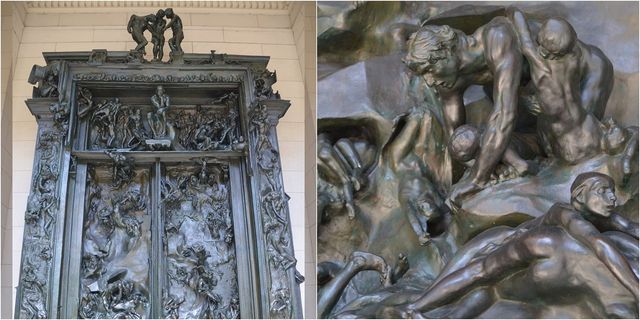
In 1880 Rodin is commissioned to create the Gates of Hell, a work that is eventually cancelled and only cast after Rodin dies
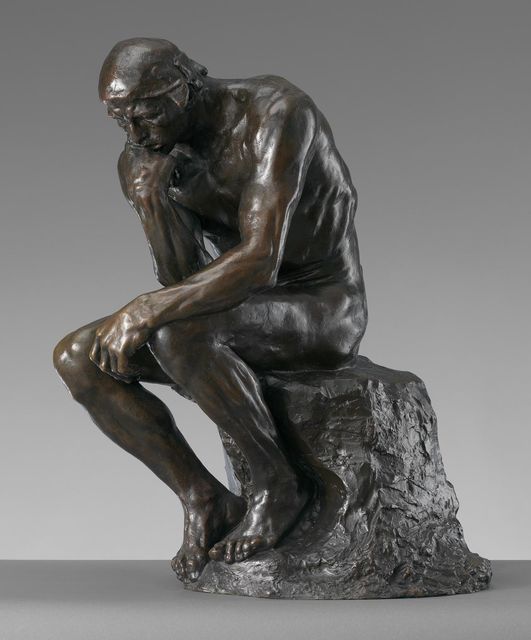
After the Gates of Hell was cancelled, Rodin reworked figure into a small standalone "The Thinker' statue in 1888
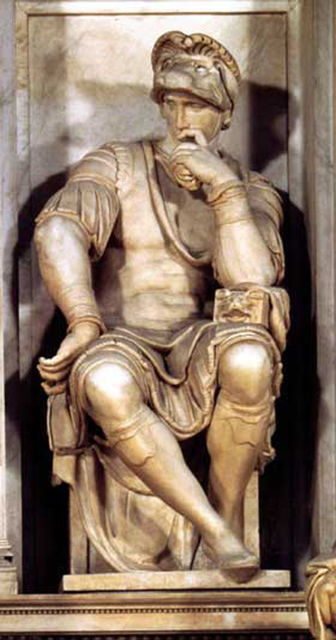
Michelangelo's "Thinker" sculpture of Lorenzo Medici is seen as a possible inspiration to Rodin for "The Poet"
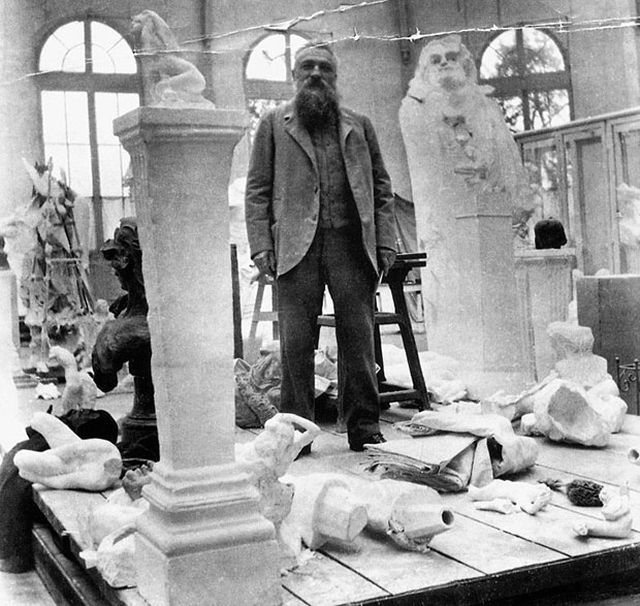
Between 1888 and 1900 Rodin focuses on a sculpture of Poet Balzac, which is rejected, and only cast after Rodin dies
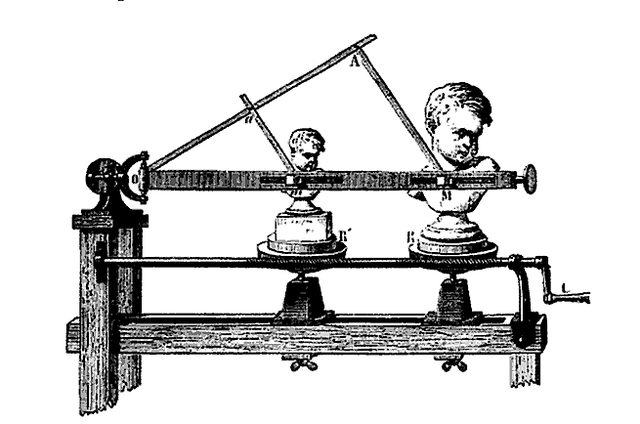
In 1900, after a 10-year pause, Rodin returns to The Thinker, using a Collas Machine enlarge it a larger (Balzac sized) statue
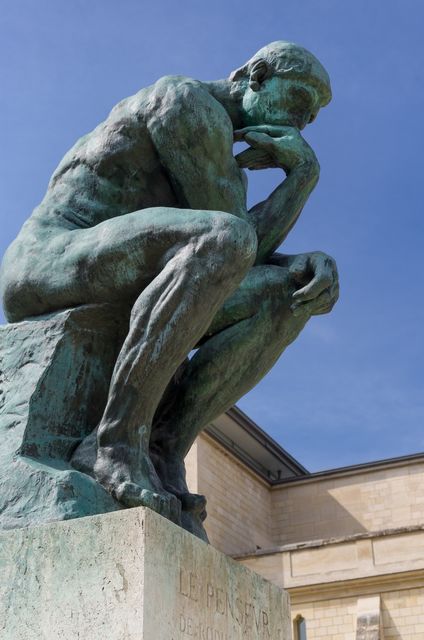
The larger version of The Thinker is exhibited in 1904 at the Salon and purchased by the French Government.
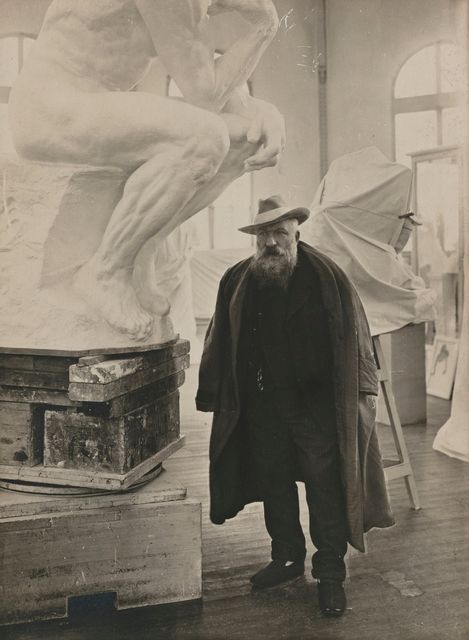
Rodin created a further 9 casts of the thinker during his lifetime - and left the rights to cast this statue to France
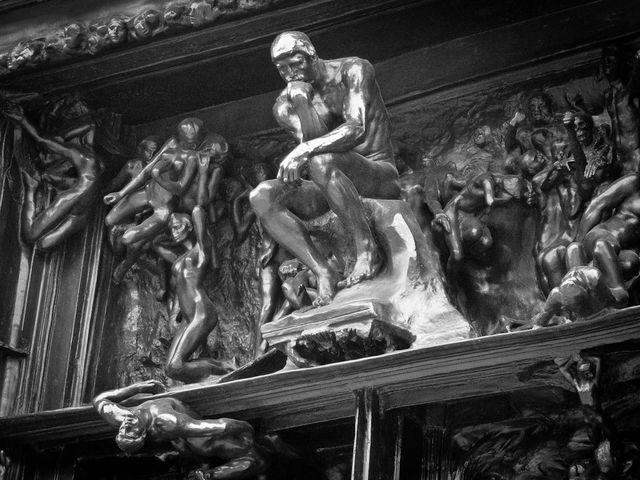
Rodin put Dante,"The Poet" at the centre of the Gates of Hell, embodying every artist, looking over his creation.